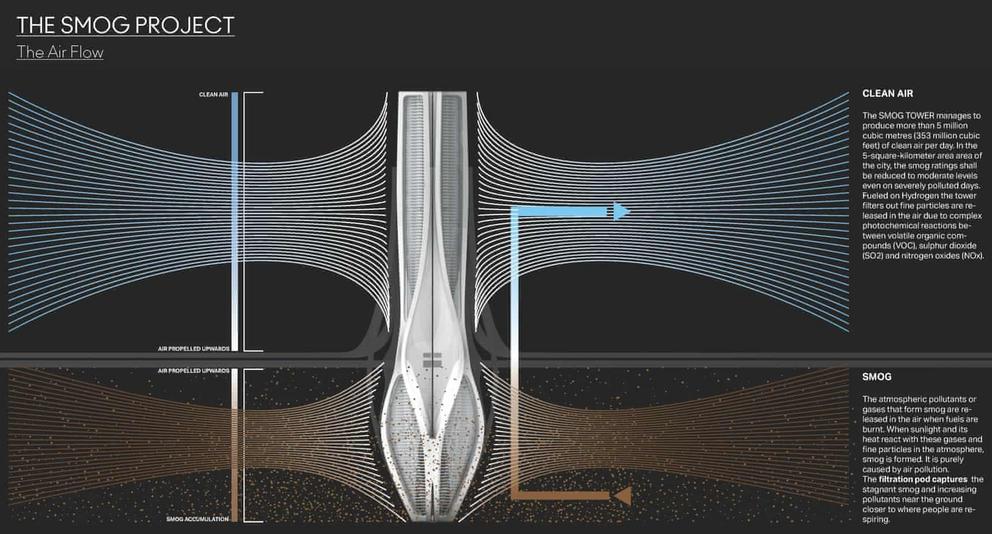Could a grid of giant filters help clean up Delhi's polluted air?
Thinking big in the fight against smog, architects have designed 100m-high pollution-absorbing towers for India’s capital city
The Indian capital regularly tops lists of the most polluted cities on earth and its residents even refer to the months when a confluence of events – crop burning, no rain, fireworks – leads to low visibility and breathability as “smog season”.
But a new concept by the Dubai-based architecture firm Znera imagines a solution embedded into the Delhi skyline: a network of giant towers that would absorb pollution and recycle it back into breathable air.

Dubai-based architecture studio Znera has developed a concept for a network of towers that would absorb smog. Photograph: Znera/World Architecture Festival
- "We drew up this dystopia to shock people into realising that if something isn’t done we are approaching an irreversible disaster." Najmus Chowdhry
The Smog Project has been shortlisted for the Experimental Future Project of the Year award 2018 at the World Architecture Festival. It is based on a far-reaching grid of 100-metre-high buildings that function as filters, each potentially producing a 1.2-square-mile area of cleaned air.
Filtration mechanisms in the bottom of each structure would catch pollutants at the level where people breathe, and giant fans at the apex would pump out the purified air. Znera says up to 3.2m cubic metres of clean air could be produced each day.
But how does something so conceptual help in the fight against smog? “It’s the first step in the right direction, and that first step has to be a bold one,” says Najmus Chowdhry, principal architect at Znera.
“We drew up this dystopia to shock people into realising that if something isn’t done we are approaching an irreversible disaster.
The Cityscape: get the best of Guardian Cities delivered to you every week, with just-released data, features and on-the-ground reports from all over the world
“The situation in Delhi is grave, and since I am from India, from Punjab, and spend a lot of time there, I feel there isn’t enough being done to even think about how to tackle this critical situation. These schemes about vehicles with odd and even number plates don’t go far enough.”
Chowdhry is alluding to plans such as alternating vehicles, banning older cars and crackdowns on two- and three-wheelers, such as auto-rickshaws – schemes that are rarely enforced. Other ideas have included rain cannons and water-spraying helicopters – which could not take off, due to smog. Chowdhry says the mindset needs to change.

The mechanics behind the design studio’s Smog Project. Photograph: Znera/World Architecture Festival
“It’s easy to think we are just publishing pretty pictures or designs, but we have had the technical details worked out, at least the mechanics of whether it is possible. I know people will say the concept is against gravity or simply about aesthetics, but they are posing the wrong questions.
“The real question is: what has been done so far to tackle smog? We’re perfectly happy to be criticised – we should be criticised, because then it means people are thinking what doesn’t work in our designs, and hopefully thinking about what can work.”
Another smog-busting project may also offer some hope. Roosegaarde Studios’ Smog Free Towers have been installed in Rotterdam and Krakow – although they are a mere seven metres tall.
The Dutch head of the design studio, Daan Roosegarde, says: “The existing towers are working well and have had a good reaction. Every time I start a new project, some say it can’t be done, but sometimes we need to upgrade reality. And that’s what we need to do in Delhi.

